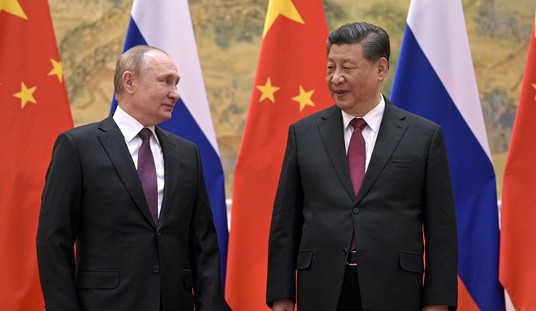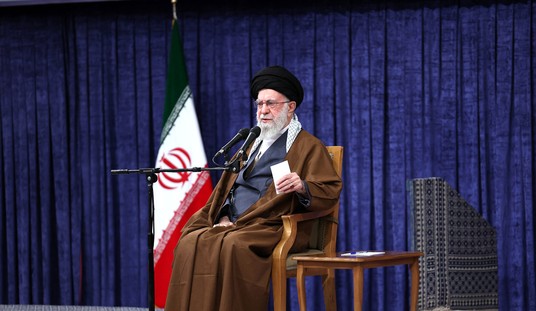The Japanese spacecraft Hayabusa 2 is about to begin a 4 year long journey to prospect a carbonaceous (Type C) asteroid. It’s given mission is to search for the building blocks of life, but also to catalog the resources which may be found on the kilometer-wide rock.
The Japan Aerospace Exploration Agency (JAXA) is planning to launch a new probe into space to mine the asteroid 1999 JU3. This is the second attempt at mining an asteroid after the last spacecraft, Hayabusa, failed in its core mission. …
New features have been added to Hayabusa 2, to try and ensure the problems that plagued its predecessor are less likely to occur.
One of these additions is a 30cm-wide explosive device called an impactor, which will be shot into the surface of the asteroid as the spacecraft moves to safety behind it.
Once the impactor explodes, a one-metre crater will be made, enabling samples less affected by solar radiation to be taken from below the surface. …
It is hoped that Hayabusa 2 will return to earth in 2020, just in time for the Tokyo 2020 Olympic Games.
These developments come at a time when US companies are seeking clarification on the subject of property rights in outer space. Right now, the legality of space development rests on the United Nations Outer Space Treaty, which is by no means clear upon the subject. “Bigelow Aerospace says a legal framework for private lunar property is needed, and reckons the American government should be involved in creating one.”
Some commercial companies, such as Bigelow Aerospace, are hoping to use the ambiguity of the treaty’s language to their advantage. Founded in 1999 and based in Las Vegas, the firm aims to manufacture inflatable space habitats. It already has an agreement with NASA to expand the International Space Station in 2015 using its flexible modules, and also to devise a plan for a privately developed, NASA financed, lunar base architecture.
The firm’s chief executive Robert Bigelow, a billionaire hotel owner, wants to establish private property rights on the Moon in a bid to tackle Chinese lunar dominance. He believes “the final nail in America’s 21st century coffin is likely to be China’s takeover of the Moon.” …
Building on the success of the Chang’e-3 mission with the Yutu rover (currently rolling on the lunar surface), China expects to put a base architecture and crew on the Moon within the next ten years.
In energy-access terms both the moon and certain asteroids are of approximately equal distance from the earth. Planetary Resources President/Chief Engineer (and former NASA scientist) Chris Lewicki describing the opportunities and challenges of asteroidal resource development, pointed out that most of the resources mined in space will remain and be used in space. This potentially overcomes on of the main objections to space exploration, the Energy Returned on Energy Invested (EROEI).
Of particular interest to Lewicki are water and metal rich asteroids. The former will be wrung for rocket fuel and radiation shielding while the latter will be worked for structural material. Water, as Lewicki puts it, is the new the petroleum of outer space. Water yields hydrogen and oxygen, the stuff of rocket fuel, not to mention the staff of life and a barrier against radiation. Best of all, such materials are already out of the gravity well of earth. Like all pioneering before it, space colonization must rely on resources in situ.
But in which objects have these resources in commercial quantities? Like the Japanese and Chinese probes, companies like Planetary Resources are focused on prospecting. The Chinese Jade Rabbit lunar probe made a small step in that direction. “The ultimate goal for Jade Rabbit was to bore a hole in the moon and see what moon rock is made of,” said one British expert.
That’s because the Chinese think the moon’s minerals might be worth extracting. “They are looking at feasibility for mining the moon, and they are likely to do it if there’s a strong business case,” says Richard Holdaway, director of the space division at the UK’s Rutherford Appleton Laboratory, which collaborates closely with China’s space programme.”
And the Chinese are not doing it “for all mankind”. They are doing it for something they can sell or use. Space policy may be the one area that the current administration gets halfway right. It believes, in principle at least, that private companies should play a major role in extraterrestrial development, supplanting the traditional government-led model.
The Obama administration has announced its commitment to sending humans to Mars and landing on an asteroid.
With this commitment, President Obama has signaled a change in the United States’ approach to space exploration a change towards more private involvement in space development. A subtle shift away from government-run space programs is opening the door for private companies to pick up the torch of space exploration.
But the devil is in the details. A bill now making its way through Congress seeking to resolve the issue of property rights may bring the issue to a head.
Enter the American Space Technology for Exploring Resource Opportunities In Deep Space (Asteroids) Act, introduced last month by Reps. Bill Posey (R., Fla.) and Derek Kilmer (D., Wash.). This bill, which applies only to asteroids, explicitly assigns the ownership of mined resources to “the entity that obtained such resources.” The Asteroids Act also protects a company’s operations on an asteroid from “harmful interference.”
Although the bill doesn’t yet define “harmful interference,” it will probably define it similarly to the way that custom and law does for fishing on the high seas. A fishing vessel is free to fish a lucrative school without another vessel navigating in a way to cause harm to the first vessel. These two elements—ownership and protection from interference—are essential for any enterprise to realistically pursue mining anywhere, including outer space.
Debate will probably center on the bill’s consistency with the 1967 Outer Space Treaty. Article I of that treaty says in part that, “Outer space, including the Moon and other celestial bodies, shall be free for exploration and use by all States.” The operative word here is “use.” Article VI goes on to say: “The activities of non-governmental entities in outer space, including the Moon and other celestial bodies, shall require authorization and continuing supervision by the appropriate State Party to the Treaty.” Thus the Asteroids Act represents the fulfillment of the 1967 U.S. treaty obligation to supervise its non-governmental entities in space.
Unfortunately, the Outer Space Treaty also governs agreements regarding the militarization of space and arms control. It is not inconceivable that some country may link the issue of property rights to the acceptance of restrictions on space-based weaponry. The problem is the degree to which such principles will force the administration to lock horns with its international rivals. If the choice is between protecting property rights and clashing with the Russians or Chinese, who knows but that foreign policy considerations will prevail.
In many ways the early 21st century resembles the late 1400s, when sovereigns were being petitioned with schemes to develop navigation technologies or build new sailing ship types whose perfection enabled what is now known as The Age of Discovery, except that the relevant ocean to be crossed is space.
The Age of Discovery is a historical period of European global exploration that started in the early 15th century with the first Portuguese discoveries in the Atlantic archipelagos and Africa, as well as the discovery of America by Spain in 1492, and the discovery of the ocean route to the East in 1498, and by a series of European naval expeditions across the Atlantic and later the Pacific, which continued until the 18th century. It is sometimes regarded as a bridge between the Middle Ages and the Modern era, along with its contemporary Renaissance movement. European overseas expansion led to the rise of colonial empires, with the contact between the Old and New Worlds producing the Columbian Exchange: a wide transfer of plants, animals, foods, human populations (including slaves), communicable diseases and culture between the Eastern and Western hemispheres. This represented one of the most-significant global events concerning ecology, agriculture, and culture in history. European exploration allowed the global mapping of the world, resulting in a new world-view and distant civilizations acknowledging each other, reaching the most remote boundaries much later.
Henry the Navigator played a pivotal role in the Age of Discovery. His villa on the Iberian coast was the spaceport of its era, full of what might now be called hi-tech gadgets and rocket scientists. “It is traditionally suggested that Henry gathered at his villa on the Sagres peninsula a school of navigators and map-makers. … The view that Henry’s court rapidly grew into the technological base for exploration, with a naval arsenal and an observatory, etc., is believed by some historians, though not actually proven.”
Nor was it all for “all mankind”. Prince Henry collected 20% “on the profits made by naval expeditions, which was the usual practice in the Iberian states of that time.” In the end greed will probably drive the establishment of private property in outer space. Government loves to tax real estate. Space is real estate and real estate is taxes.
[jwplayer mediaid=”40636″]
Recently purchased by readers:
Eleven Minutes, A Novel by Paul Coelho
The Diabetes Solution, How to Control Type 2 Diabetes and Reverse Prediabetes Using Simple Diet and Lifestyle Changes–with 100 recipes
Why We Lost, A General’s Inside Account of the Iraq and Afghanistan Wars
Plochman’s Kosciusko Mustard, Spicy Brown, 9-Ounce Spoonable Barrels (Pack of 12)
Crane Adorable Ultrasonic Cool Mist Humidifier, with 2.1 Gallon Output per Day Dragon figure
Casio Men’s WS210H-1AV Itoya Art Profolio Storage/Display Book 4 inch x 6 inch 24
Recommended:
Above it All, [Kindle Edition], a helicopter pilot in Vietnam
13 Hours, The Inside Account of What Really Happened In Benghazi
Tower of the Sun, Stories From the Middle East and North Africa [Kindle Edition] by Michael Totten
Keurig K75 Single-Cup Home-Brewing System with Water Filter Kit, Platinum
The Walking Dead, 5 Seasons 2014
Did you know that you can purchase some of these books and pamphlets by Richard Fernandez and share them with you friends? They will receive a link in their email and it will automatically give them access to a Kindle reader on their smartphone, computer or even as a web-readable document.
The War of the Words for $3.99, Understanding the crisis of the early 21st century in terms of information corruption in the financial, security and political spheres
Rebranding Christianity for $3.99, or why the truth shall make you free
The Three Conjectures at Amazon Kindle for $1.99, reflections on terrorism and the nuclear age
Storming the Castle at Amazon Kindle for $3.99, why government should get small
No Way In at Amazon Kindle $8.95, print $9.99. Fiction. A flight into peril, flashbacks to underground action.
Storm Over the South China Sea $0.99, how China is restarting history in the Pacific
Tip Jar or Subscribe or Unsubscribe to the Belmont Club










Join the conversation as a VIP Member